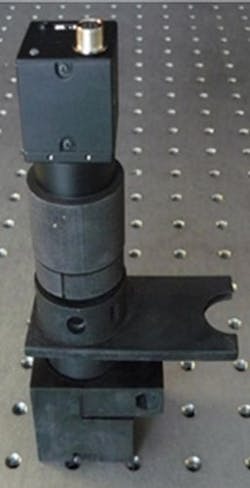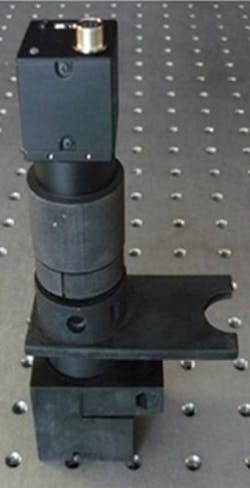Plastic fluorescence microscope can quantify white blood cells cheaply
Researchers at Rice University (Houston, TX) have developed a low-cost plastic, miniature digital fluorescence microscope that can quantify white blood cell levels at the point of care. The microscope can be used in resource-poor locations that do not have access to laboratory settings.
Related: Smartphone video microscope detects parasites in blood within 2 minutes
"One of the driving aspects of the project is the cost of the sample or sample preparation," says Tomasz Tkaczyk, an associate professor in the Department of Bioengineering at Rice University. "Many systems which work for point-of-care applications have quite expensive cartridges. The goal of this research is to make it possible for those in impoverished areas to be able to get the testing they need at a manageable price point."
The researchers' device identifies and quantifies lymphocytes, monocytes, and granulocytes (three types of white blood cells) in a drop of blood mixed with the staining compound acridine orange. The compound is repelled by water at neutral pH, which allows it to easily diffuse through cellular and nuclear membranes, where it turns green or red when encountering DNA or RNA, respectively, with emission maximums at 525 and 650 nm. By optimizing a microscope for these emission peaks, the researchers are then able to quantify the white blood cells in a sample consisting only of 20 µL of dye, 20 µL of whole blood, and a glass slide with a coverslip. Tkaczyk explains that device needs to be able to resolve single cells, which are on the order of 1 µm or more.
To fabricate the microscope's objective, which consisted of one polystyrene lens and two polymethyl methacrylate aspheric lenses, the researchers used a single-point diamond turning lathe. The lenses were then enclosed in an all-plastic, 3D-printed microscope housing and objective. Once constructed, the microscope provided a field of view of 1.2 mm, allowing for at least 130 cells to be present for statistical significance when quantifying white blood cells. Additionally, the microscope doesn't require any manual adjustment between samples once constructed.
The prototype microscope, which also includes an LED light source, power supply, control unit, optical system, and image sensor, cost less than $3000 to construct. At production levels upwards of 10,000 units, the researchers estimate that this price would fall to around $600 for each unit, with a per-test cost of a few cents.
Future work for Tkaczyk and his colleagues includes developing an automated algorithm for white blood cell identification, as well as comparing their differential counts to other conventional hemotology analyzers. The use of low-cost components such as LEDs, reflectors, and USB detectors, combined with the all-plastic housing and lenses, will allow for future versions of the prototype to be mass-produced.
Full details of the work appear in the journal Biomedical Optics Express; for more information, please visit http://dx.doi.org/10.1364/BOE.6.004433.
Follow us on Twitter, 'like' us on Facebook, connect with us on Google+, and join our group on LinkedIn

